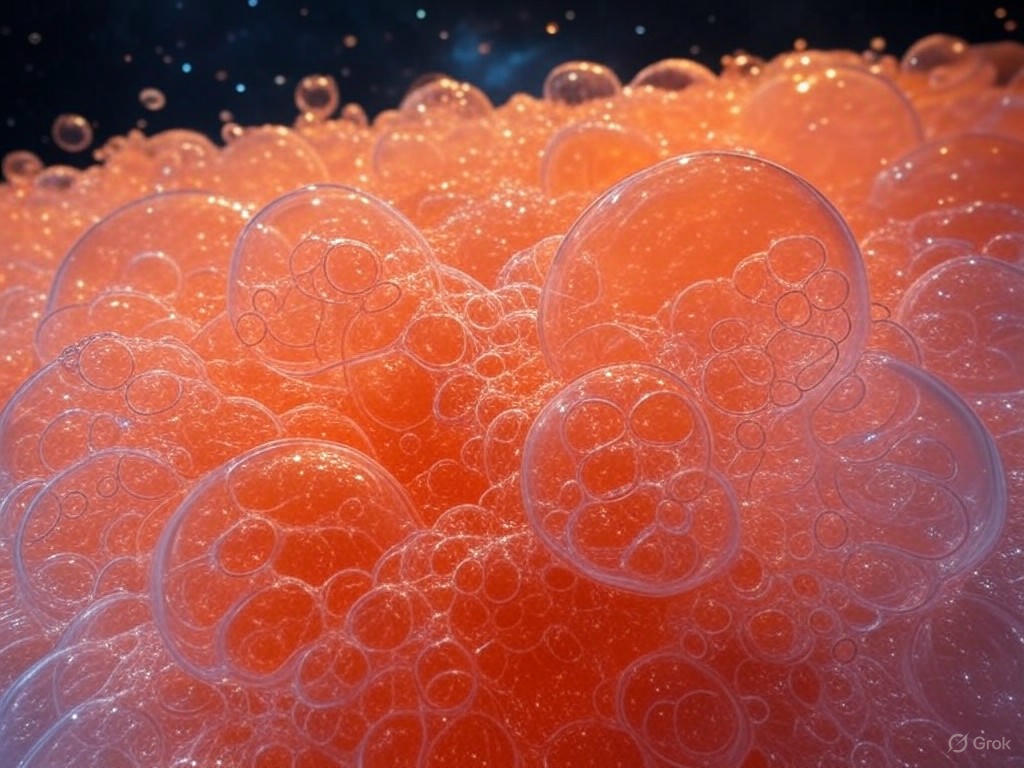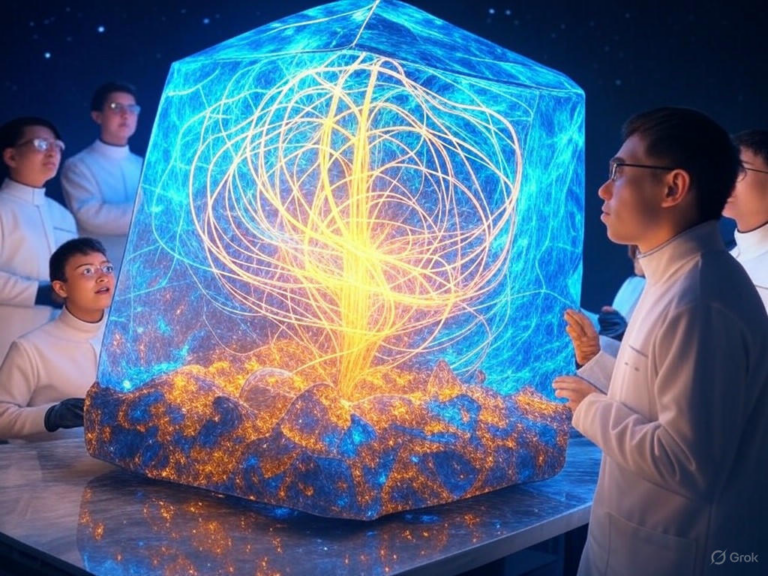
Quantum Simulation Reveals How Reality Might Crumble
The Intriguing World of Quantum Simulation and Potential Universal Collapse
Imagine if the fabric of our universe was as precarious as a house of cards, ready to topple at any moment. That’s exactly what a recent quantum simulation experiment suggests, revealing how our reality might not be as stable as we’ve always assumed. Using a state-of-the-art 5564-qubit quantum annealer, scientists have modeled the dramatic process of false vacuum decay, hinting at scenarios where everything we know could shift into a more stable state overnight.
This breakthrough in quantum simulation not only challenges our grasp of physics but also raises profound questions about existence itself. Have you ever wondered if the world around us is just a temporary setup, waiting for that unexpected nudge? Let’s dive into the details of how this innovative technology is uncovering these cosmic mysteries.
Grasping False Vacuum Decay Through Quantum Simulation
False vacuum decay is a concept that paints our universe as a metastable bubble, teetering on the edge of transformation. Think of it like a marble perched on a hill’s ridge—it could stay put for eons or suddenly roll into a deeper valley, triggering widespread change. Scientists have long theorized this, but Quantum simulation has now brought these ideas into sharper focus through advanced computational models.
In this experiment, researchers employed quantum annealing to explore these states, simulating a one-dimensional version of space where quantum possibilities collide. By doing so, quantum simulation demonstrates how even the most stable-seeming realities might harbor hidden instabilities, offering a window into processes that classical computers can’t handle.
Exploring the Mechanics of Reality’s Potential Breakdown
The core of this quantum simulation lies in visualizing how a universe might crumble, starting with tiny bubbles of “true vacuum” forming amid the false one. These bubbles emerge from a delicate balance: the energy surge from a state shift versus the energy loss at their edges, creating a ripple effect that could propagate across space.
What’s truly fascinating is how multiple bubbles interact in the simulation, with smaller ones influencing larger counterparts in a cosmic dance. This interplay, uncovered through quantum simulation, suggests that if decay begins, it might spread faster than we can imagine, reshaping the universe in an instant.
How Quantum Simulation Powers These Discoveries
At the heart of this research is the D-Wave quantum annealer, a device that harnesses qubits to tackle complex problems far beyond classical capabilities. Unlike traditional bits, qubits in quantum simulation can exist in superpositions, allowing for simultaneous exploration of multiple outcomes. This makes it ideal for modeling the chaotic dynamics of vacuum decay, where countless variables interplay.
By scaling up to 5564 qubits, the team achieved simulations that reveal intricate details about energy transitions. It’s a prime example of how quantum simulation is pushing the boundaries of what we can test in theoretical physics, turning abstract ideas into tangible models.
The Delicate Nature of Quantum Reality
Quantum simulation doesn’t just stop at universe collapse; it probes deeper into the essence of reality. Particles behaving in ways that defy everyday logic, like existing in multiple states at once, make us question if our perceived world is an illusion. This experiment adds layers to that debate by showing how quantum effects could lead to massive shifts.
Consider the eerie phenomenon of quantum entanglement, where particles influence each other across vast distances. In the context of quantum simulation, this highlights how reality might be interconnected in ways we’ve barely scratched the surface of, challenging our everyday assumptions.
Could Reality Be an Elaborate Illusion Shaped by Quantum Simulation?
Some quantum theories propose that we live in a web of possibilities, where observation collapses potential into reality. This simulation bolsters those ideas, suggesting quantum simulation could one day help us test if our universe is prone to unexpected phase changes. If you’ve ever pondered the nature of existence, this research offers food for thought— what if everything we see is just a fleeting arrangement?
Experts like those featured in recent documentaries argue that quantum simulation is key to unraveling these mysteries, blending philosophy with hard science.
Overcoming Hurdles in Quantum Simulation Techniques
Running these simulations isn’t easy; quantum systems are incredibly fragile, prone to decoherence from environmental interference. That’s where advanced error correction comes in, ensuring calculations remain accurate despite real-world disruptions. Techniques like the Shor code help maintain the integrity of quantum simulation, allowing researchers to push forward.
Imagine trying to balance a feather on a windy day—that’s akin to preserving quantum states. By addressing these challenges, quantum simulation paves the way for reliable insights into cosmic events, making each breakthrough feel like a hard-won victory.
Cosmic Implications Drawn from Quantum Simulation
While this quantum simulation doesn’t predict an immediate end, it validates theories about how false vacuum decay might play out over unimaginable timescales. Researchers emphasize that even if collapse is possible, it could take quadrillions of years, giving us plenty of time to ponder. Still, it’s a stark reminder of the universe’s fragility.
As physicist Zlatko Papic noted, “This work shows how quantum simulation is bridging gaps in our knowledge, letting us explore the universe’s fate like never before.” For anyone curious about our cosmic destiny, this offers a compelling glimpse.
Debates Intensified by Quantum Simulation Findings
The results have sparked fresh debates in quantum physics, particularly around interpretations like the Many Worlds theory. Does quantum simulation support the idea of parallel universes, or is that a stretch? Experts like Scott Aaronson caution against overextrapolation, pointing out that while quantum mechanics works wonders at small scales, applying it universally is still unproven.
Aaronson gives about 50/50 odds on whether quantum rules hold at cosmic levels, making experiments like this crucial. Quantum simulation is at the forefront of testing these limits, potentially revealing new physics in the process.
Pushing the Boundaries with Advanced Quantum Simulation
Future tests, such as those proposed by Bouwmeester et al., aim to check if quantum superpositions can apply to gravity itself. If successful, quantum simulation could confirm or challenge our fundamental laws, opening doors to revolutionary discoveries. What do you think—could these experiments rewrite our understanding of the cosmos?
It’s exciting to consider how far quantum simulation might take us, perhaps even simulating the Big Bang in detail someday.
Paths Forward in Quantum Simulation Research
Building on this, scientists are eyeing more complex quantum simulations in multiple dimensions to better mimic real-world conditions. Other areas include studying how quantum fields evolved post-Big Bang or identifying spots in the universe more vulnerable to decay. The Institute for Robust Quantum Simulation is leading these efforts, turning bold ideas into actionable science.
For researchers and enthusiasts alike, this means new opportunities to explore. Maybe you’ll be inspired to learn more about quantum annealing and its applications—who knows where it could lead?
Wrapping Up: What Quantum Simulation Teaches Us About Cosmic Instability
In the end, this quantum simulation doesn’t foretell doom but invites us to marvel at the universe’s potential for change. It’s a testament to how far technology has come in probing the unknown, from quantum annealing to vast simulations of reality’s edge. As we continue to advance, we might uncover even greater secrets about our existence.
So, what’s your take on this mind-bending topic? Share your thoughts in the comments, explore more on quantum physics in our related posts, or spread the word to spark some cosmic conversations. Let’s keep the discussion going—who knows what we’ll discover next?
References
- Quantum Simulation Shows How Reality Could Collapse Like a House of Cards. SciTechDaily. Link
- News and Updates from the Institute for Robust Quantum Simulation. RQS. Link
- Quantum Machine Could Predict the Ultimate Fate of the Universe. ScienceAlert. Link
- Documentary on Quantum Space. YouTube. Link
- Quantum Mechanics Explained. YouTube. Link
- Aaronson’s Thoughts on Quantum Mechanics. GitHub Gist. Link
- Challenges in Quantum Computing. Plain Concepts. Link
- Additional Quantum Insights. YouTube. Link
quantum simulation, false vacuum decay, quantum annealing, universe collapse, quantum reality, D-Wave quantum computer, quantum physics breakthroughs, cosmic instability, quantum computing advances, reality simulation experiments







